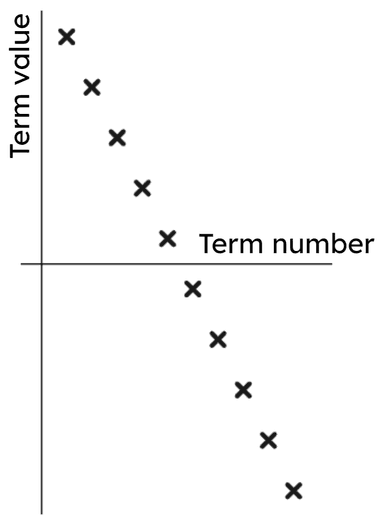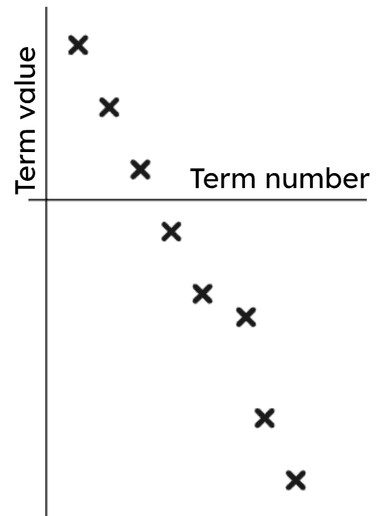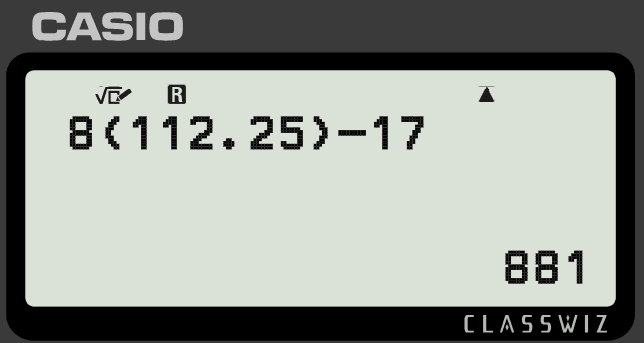Myths about teaching can hold you back


- Year 8
Justifying terms of a sequence
I can determine whether a number is a term of a given arithmetic sequence.


- Year 8
Justifying terms of a sequence
I can determine whether a number is a term of a given arithmetic sequence.
These resources will be removed by end of Summer Term 2025.
Switch to our new teaching resources now - designed by teachers and leading subject experts, and tested in classrooms.
These resources were created for remote use during the pandemic and are not designed for classroom teaching.
Lesson details
Key learning points
- A graph can be used to identify if a particular number is a term in a sequence.
- The nth term rule can be used to determine if a number is in the sequence .
- It is important to justify if a number is or is not a term in a sequence.
Keywords
Arithmetic sequence - An arithmetic (or linear) sequence is a sequence where the difference between successive terms is a constant.
Common misconception
It is impossible to tell if 174 368 is in the sequence -8,-3,2,7, ...
Generalising the rule for forming a given sequence can help us see if a value is in the sequence.
To help you plan your year 8 maths lesson on: Justifying terms of a sequence, download all teaching resources for free and adapt to suit your pupils' needs...
To help you plan your year 8 maths lesson on: Justifying terms of a sequence, download all teaching resources for free and adapt to suit your pupils' needs.
The starter quiz will activate and check your pupils' prior knowledge, with versions available both with and without answers in PDF format.
We use learning cycles to break down learning into key concepts or ideas linked to the learning outcome. Each learning cycle features explanations with checks for understanding and practice tasks with feedback. All of this is found in our slide decks, ready for you to download and edit. The practice tasks are also available as printable worksheets and some lessons have additional materials with extra material you might need for teaching the lesson.
The assessment exit quiz will test your pupils' understanding of the key learning points.
Our video is a tool for planning, showing how other teachers might teach the lesson, offering helpful tips, modelled explanations and inspiration for your own delivery in the classroom. Plus, you can set it as homework or revision for pupils and keep their learning on track by sharing an online pupil version of this lesson.
Explore more key stage 3 maths lessons from the Sequences unit, dive into the full secondary maths curriculum, or learn more about lesson planning.

Licence
Prior knowledge starter quiz
6 Questions
Q1.The calculation 6(20) - 8 would find the 20$$^\text{th}$$ of the sequence $$6n-8$$.
Q2.Which of these describe features of the sequence $$5n-9$$?
Q3.What is the 75$$^\text{th}$$ term of the sequence $$6n-17$$?
Q4.What happens when you plot an arithmetic sequence?

Q5.Calculate the 200$$^\text{th}$$ term of $$17.96-0.32n$$. You may use a calculator.
Q6.Put these term values in order of size. Start with the smallest.
Assessment exit quiz
6 Questions
Q1.The sequence 37, 47, 57, 67, 77, ... could be described as which?
Q2.Which of the below statements supports the justification that 6941 is not in the arithmetic sequence starting 14, 19, 24, 29, 34, ...?
Q3.Which of the below will be common terms in the sequences $$2n+24$$ and $$5n+13$$?
Q4.The first 8 terms of a sequence are plotted. Which term is incorrect in the plotting of this arithmetic sequence?

Q5.Which of the below is a useful estimation to start with when trying to find 315 in the sequence $$6n-9$$?
Q6.What does this calculator display tell us?


